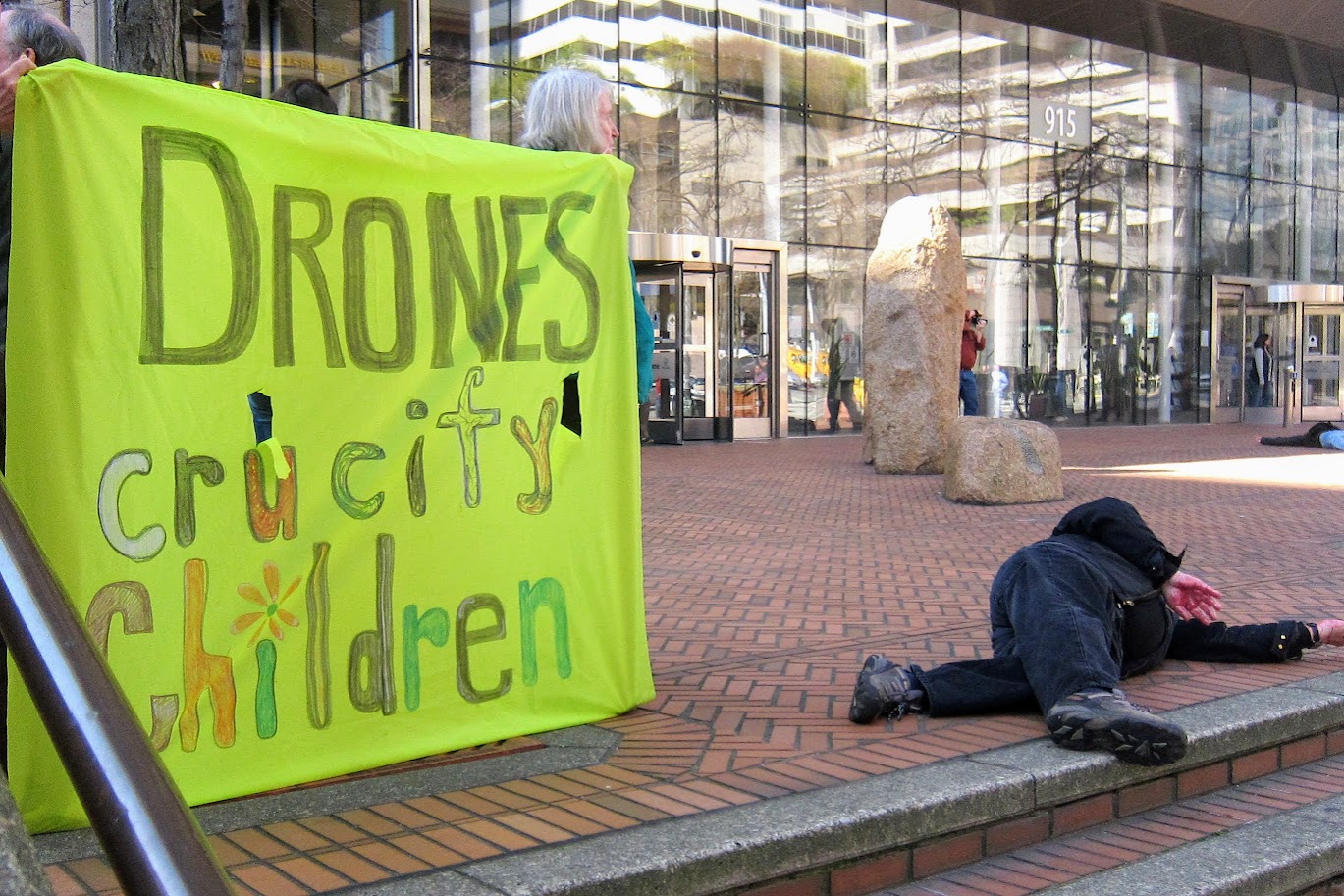My wife Hannah and I spent ten years as part of a Mennonite worship community in Seattle. We started our family there. I learned some things along the way.
Potlucks – Oh man, the potlucks. Every manner of fruit, grain, vegetable, and salmon variety from the bounty of the Pacific Northwest. Many of our churchmates came from farm country and many had lived overseas, combining Midwestern ingenuity with cosmopolitan curiosity of flavors. It was awesome, if a bit heavy on lentil salads. It’s worth getting to know the Mennonites for their cookbooks alone.
Harmonies – Soaring-intricate four-part harmonies filled our worship space every Sunday morning. They seemed to come naturally, but I’d see mothers leaning over hymnals to guide their children, so I knew it took practice. I never got anywhere close to the hang of it, casting about for the melody instead. Jesus Christ is calling, calling in the streets, we sang. “Who will join my journey? I will guide their feet.”*
Steel wheels – There are something like 16 orders of Amish and Mennonites, each with particular rules about technology, as a friend from Kansas explained to me. Some groups won’t use tractors. Some use only tractors with steel wheels, so they can’t be driven into town on Saturday night. At root is the question of how worldly to be. The Mennonites in Seattle are thoroughly modern—iPhone early adopters, professional jobs, streamers of European football, etc.
Neighborhood – Our church met in the Lake City neighborhood, as close to working-class as North Seattle gets in the age of Amazon and astronomical tech wealth. Car dealerships and drive-through espresso stands. Lakefront property and public housing. We met in a converted movie theater. We ran a day center for unhoused neighbors. Occasionally a neighbor in crisis disrupted Sunday morning services, and the way our worship leaders responded — patiently, tenderly — spoke volumes.
History – Our Mennonite friends came from several ethnic backgrounds — Swiss-German, Low German, Russian — with histories of persecution and emigration to Pennsylvania, Virginia, Canadian prairie provinces, elsewhere. I never got it all straight. There are cultural histories and generational traumas I never fully grasped. They were completely welcoming regardless. The rest of us came with every manner of religious and nonreligious backstory, including more than a few of us with Christian Reformed roots, drawn to the Mennonite ethic of peacemaking, community, and social action.

Blood on the plaza – On a drizzly Good Friday morning, outside a federal office building downtown, a group of our churchmates read John’s account of Jesus entering Jerusalem to confront the political powers. With a call of “drone strike!” they smeared themselves in symbolic blood and fell to the ground in witness against American drones terrorizing communities in Pakistan, Afghanistan, and Iraq. Adults hurried past pretending not to see. One child exclaimed “That guy is dead!” I stayed home with our infant son, reflecting on my own anger at my country’s warmaking.
War taxes – At study hour we learned about the Anabaptist tradition of war tax resistance. Some practitioners keep their income below federally taxable levels to avoid contributing to state violence. Some withhold the telephone excise tax, a small but specific tax passed in 1898 to fund the Spanish–American War. Many of us do nothing. I know of no Christian tradition who takes the gospel call to peacemaking as seriously as the Mennonites.
Pub nights – For years I struggled with a logjam of questions about home, family, career, and direction. It felt interminably stuck. There were particular conversations with church friends, sometimes after long bike rides through our glittering, unaffordable city, that were instrumental in opening up a measure of clarity. The ales were delicious, but you can get those anywhere. The conversations with dear friends were unforgettable.
Quilts – When our firstborn arrived, our pastor draped him in a glorious quilt of city shapes in reds, oranges, blues, and greens, speaking words of blessing to our family. When our second son arrived, she carried him around as our congregation extended their promise to care for him. I reflected on the difference between Reformed infant baptism and Anabaptist infant dedication, concluding that they are more alike than different, both signs of God’s covenant and a community’s care for its people. The quilt still hangs in our boys’ bedroom.
Sacrament – Our church took hospitality seriously, making it clear that all are welcome at the communion table, trying out gluten-free bread recipes (not all of them successful!) and non-alcoholic wine, rearranging our worship space for accessibility. I never tired of walking up front with a newborn in my arm or a toddler grasping my hand to receive a blessing. Here in this world, dying and living, we are each other’s bread and wine, we sang.**
The rest – Is there more to the story? Yes, of course, there always is. There was conflict, same as any church. There were national gatherings with strife over sexuality and policy and fading support for institutional ministries. There were the ever-present pressures of housing costs and urban inequality and busy modern lives. And my particular experience was just that — my own.
The center – Together we waited for, listened for, longed for Jesus, whose name is peace. It was utterly ordinary, stuff that happens unnoticed all around the world all the time. And yet it matters more than I have words to say.
* “Jesus Christ is waiting,” John L. Bell and Graham Maule, in Sing the Journey (Mennonite Publishing Network, 2005)
** “What is this place,” Huub Oosterhuis, in Hymnal: A Worship Book (Brethren Press, 1992)
Plaza/drone photo courtesy Ken Kraybill


15 Responses
Thanks for this.
Thanks for these insights,
Jonathon. We also lived in a Mennonite community for a few years and found it life-changing to this day. Allow me to expand on a few of your observations:
1. There are multiple orders under the Amish/Mennonite umbrella, with a broad range of doctrinal and practical interpretations. They seem to collaborate well on service, compassion, and generosity. Somebow the identity remains, maintaining the main thing as the main thing.
2. The overriding identity is a resistance to the violence and materialistic entitlement that stems from nationalistic, patriotic pride. These are, first of all, kingdom-of-God people. History does shape a theology.
3. The Mennonite movement emerged out of persecution that included our Reformed ancestors as perpetrators. It was not covenantal and baptismal theology that made them a threat. It was a refusal to align with church-state governments killing each other.
4. The Mennonite identity places emphasis on belonging, non-violence, simple living, shared space, and a limited capitalism.
We can learn much from Mennonite traditions, particularly their cautions around war and intentional misrepresentations of various people-groups, me-first economics, and power-based governance. They may not have everything right, but they take shalom very seriously.
Thanks for sharing this.
A fine quilt of its own kind. Thanks so much.
A beautifully put-together, informative post. Much to emulate here. Thank you, Jonathan.
Thank you, Jonathan, your experience and observations put some of us in a difficult position. Can I adhere to the Belgic Confession “without reservation” and agree with your writing? BC article 34 questions the salvation of these rebaptizers, something I am not willing to do. I am envious of your worship experience with these brothers and sisters in Christ.
Thank you for bringing us with you into this community.
Thanks for this. I’ve often thought of myself as a closet anabaptist embedded in a reformed community. Infant baptism and infant dedication need not be as far apart in meaning as some would make it.
Jonathan, My husband, Charlie, and I always held the Mennonites up because of their believe in pacificism. I grew up as a Catholic and my husband grew up Orthodox Presbyterian but we became Christian Reformed early in our marriage. Of course, CRC is not pacificist so I am familiar with worshiping with a group that thinks a bit differently than I do. This has helped me with human institutions not being perfect. This is true with churches, governments, and all kinds of institutions. We have to wait for heaven to know how our Lord created the world.
As a Disaster Responder I often work in harmony with my Mennonite brothers and sisters. Their commitment to social justice and being the hands and feet of Jesus for disaster survivors sets an example for me.
Thank you, Jonathan, for this rich list of blessings Mennonites have given the world. Here in Canada we have another gift to add to your list: Mennonites have enriched Canada with a robust tradition of literature, a much larger body of fiction and poetry than from any other ethnic community of similar size. Rudy Wiebe, Miriam Toews, Sandra Birdsell, and Patrick Friesen are writers whose names come to the fore, but I would have a very long list indeed if I were to list the many others.
The Reformed tradition emphasizes engagement with culture, and rightly so, but the number of writers the Dutch Reformed community has produced over the years is pitifully small. How many writers come to mind? Can you name a dozen, even?
What I find myself asking is, why is this so? Why have Mennonites, who have tended to withdraw from culture, as Rudy Wiebe laments in his novel Peace Shall Destroy Many–why have Mennonites produced so many more writers in Canada in the last fifty, sixty years than has the Reformed community in north America, with its emphasis on cultural engagement? May I suggest this as a topic for a Master’s thesis or a doctoral dissertation for an aspiring academic within the Reformed community?
It’s a good question, Hugh. I’ve wondered that myself.
I’ve lived in Lake City since the time when this worship space was our local theatre. I haven’t met but two women who are members of this community, and they both mentioned to me that the women in their church were not allowed to drive.
Love the four-part harmony singing! I was recently drawn to our local CRC congregation for their wonderful harmonies during worship. The Welsh are also well known for their robust four-part singing!
Jon,
I reach for my well-worn early edition of More with Less often. During a House Visitation in the 80’s Pastor Hofman thoroughly enjoyed the Basic Chicken Curry. He stayed a long time!
Thanks for words. Keep writing.
Sandee
Another very interesting Anabaptist community is the Hutterites. They live mostly in the Dakotas and the plains of Canada. Their beliefs are much the same as the Amish and Mennonites, but they literally hold everything in common. Individuals own very little. They take very literally the Acts verses that talk about believers living in common and sharing according to need. Most housing is in apartment-type complexes. They eat lunch and dinner together, segregated by sex. Women wear not the bonnets or white net caps of the Amish and Mennonites, but black kerchiefs with polka dots. The size of the dots–or their absence altogether–tells you what branch of Hutterites they are a part of. They are a fascinating community to study.
Great piece Jon; sort of a written quilt all its own, nicely pieced together. So happy you have joined our church and are bringing to it what you learned from the Mennonites.